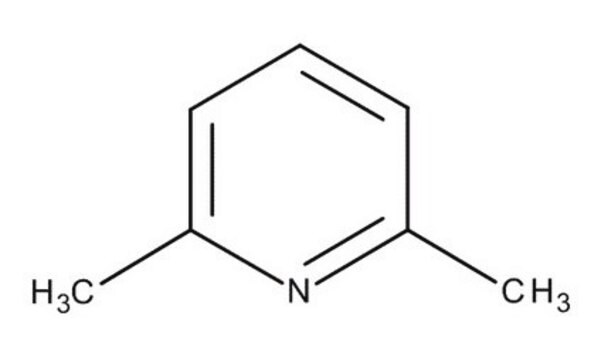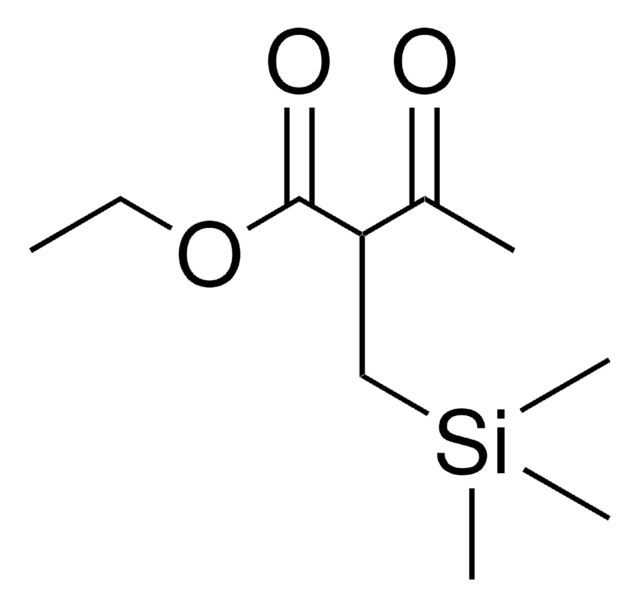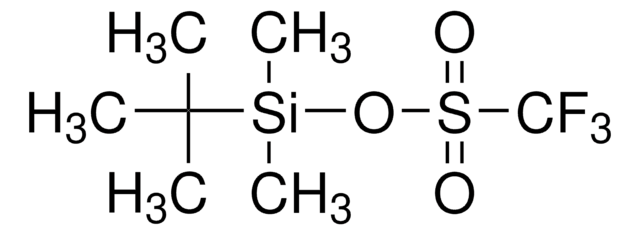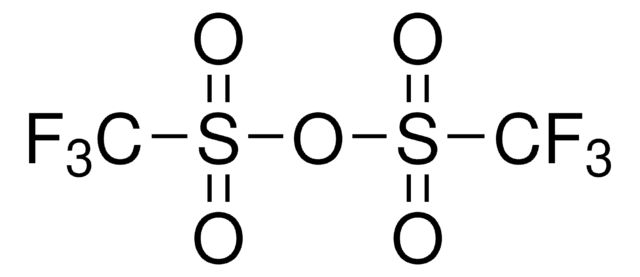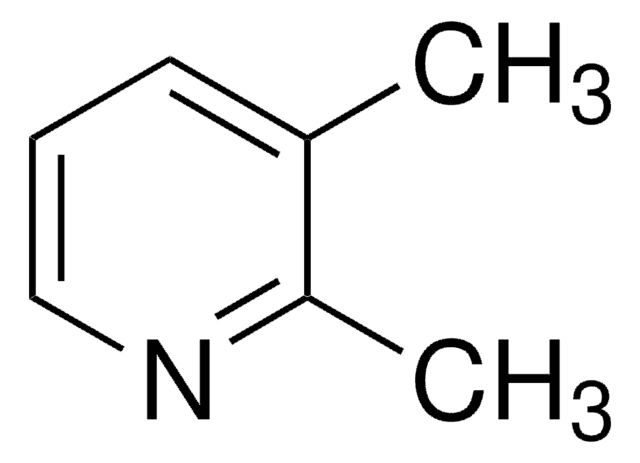L3900
2,6-Lutidine
ReagentPlus®, 98%
Synonyme(s) :
2,6-Diméthylpyridine
About This Item
Produits recommandés
Niveau de qualité
Gamme de produits
ReagentPlus®
Pureté
98%
Indice de réfraction
n20/D 1.497 (lit.)
Point d'ébullition
143-145 °C (lit.)
Pf
−6 °C (lit.)
Densité
0.92 g/mL at 25 °C (lit.)
Chaîne SMILES
Cc1cccc(C)n1
InChI
1S/C7H9N/c1-6-4-3-5-7(2)8-6/h3-5H,1-2H3
Clé InChI
OISVCGZHLKNMSJ-UHFFFAOYSA-N
Vous recherchez des produits similaires ? Visite Guide de comparaison des produits
Application
It can be used:
- As a promoter for catalytic asymmetric fluorination of α-cyanophosphonates in the presence of chiral Pd(II)-bisphosphine complexes.
- In combination with tert-butyldimethylsilyl triflate for the protection of tertiary alcohols and unreactive secondary alcohols.
- In combination with triethylsilyl trifluoromethanesulfonate for the conversion of acetals to the corresponding aldehydes in dichloromethane followed by workup in water.
Informations légales
Mention d'avertissement
Warning
Mentions de danger
Conseils de prudence
Classification des risques
Acute Tox. 4 Oral - Eye Irrit. 2 - Flam. Liq. 3 - Skin Irrit. 2
Code de la classe de stockage
3 - Flammable liquids
Classe de danger pour l'eau (WGK)
WGK 3
Point d'éclair (°F)
91.4 °F
Point d'éclair (°C)
33 °C
Équipement de protection individuelle
Eyeshields, Faceshields, Gloves, type ABEK (EN14387) respirator filter
Faites votre choix parmi les versions les plus récentes :
Déjà en possession de ce produit ?
Retrouvez la documentation relative aux produits que vous avez récemment achetés dans la Bibliothèque de documents.
Les clients ont également consulté
Notre équipe de scientifiques dispose d'une expérience dans tous les secteurs de la recherche, notamment en sciences de la vie, science des matériaux, synthèse chimique, chromatographie, analyse et dans de nombreux autres domaines..
Contacter notre Service technique
